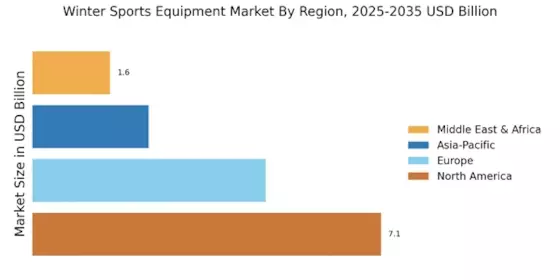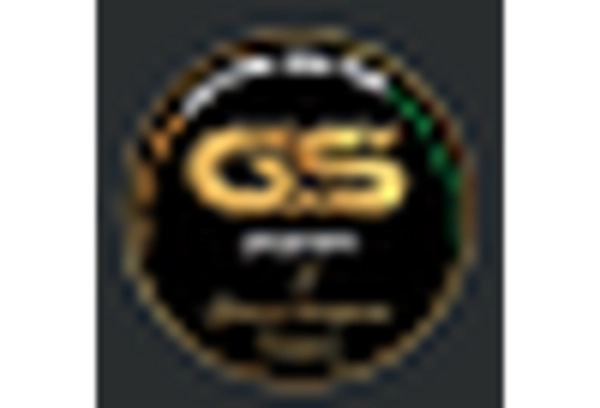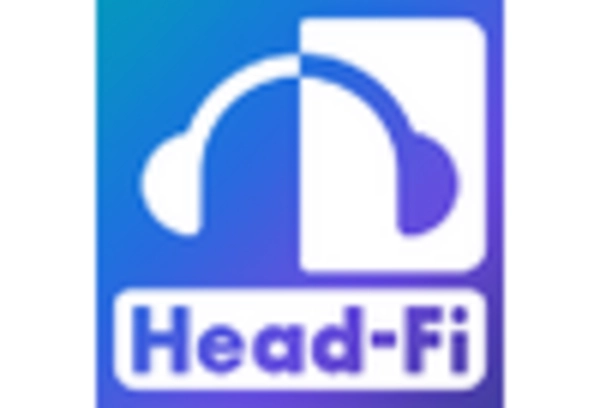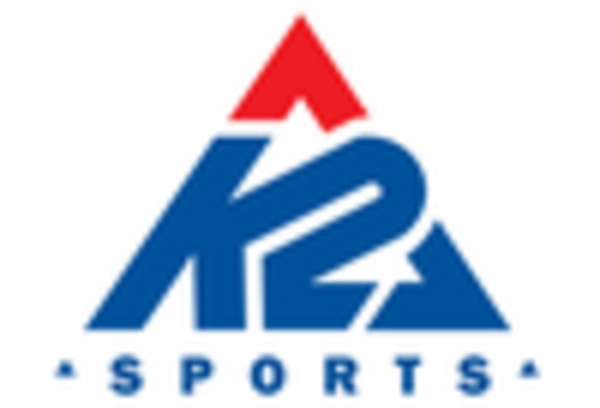Technological Innovations in Equipment
Technological advancements play a pivotal role in shaping the Winter Sports Equipment Market. Innovations such as improved materials, enhanced safety features, and smart technology integration are transforming the landscape of winter sports gear. For instance, the introduction of lightweight, durable materials has led to the development of skis and snowboards that offer better performance and maneuverability. Additionally, smart wearables that track performance metrics are gaining traction among enthusiasts. The market for smart winter sports equipment is projected to grow significantly, with estimates suggesting a compound annual growth rate of around 10% over the next five years. These technological innovations not only enhance the user experience but also attract new participants to winter sports, thereby driving market growth.
Growing Awareness of Health and Fitness
The increasing awareness of health and fitness is significantly influencing the Winter Sports Equipment Market. As individuals prioritize physical well-being, winter sports are being recognized as effective means of exercise that combine enjoyment with fitness benefits. Activities such as skiing and snowboarding provide cardiovascular workouts while also improving balance and coordination. This trend is reflected in market data, which indicates a steady rise in sales of winter sports equipment, with a notable increase in fitness-oriented products. The emphasis on health and fitness is likely to continue driving demand for winter sports gear, as more consumers seek to engage in activities that promote an active lifestyle. Consequently, manufacturers are responding by developing equipment that caters to health-conscious consumers, further propelling market growth.
Rise of E-commerce and Online Retailing
The rise of e-commerce and online retailing is transforming the Winter Sports Equipment Market. With the increasing prevalence of online shopping, consumers are now able to access a wider range of winter sports equipment from the comfort of their homes. This shift has led to a significant increase in online sales, with estimates suggesting that e-commerce sales in the winter sports sector have grown by over 20% in recent years. The convenience of online shopping, coupled with competitive pricing and the ability to compare products easily, is attracting more consumers to purchase winter sports gear online. As e-commerce continues to expand, it is likely to play a crucial role in shaping consumer behavior and driving sales in the winter sports equipment market.
Increased Participation in Winter Sports
The Winter Sports Equipment Market is experiencing a surge in participation rates across various demographics. This increase is attributed to a growing interest in outdoor activities and adventure sports, particularly among younger generations. According to recent data, participation in skiing and snowboarding has risen by approximately 15% over the past five years. This trend is likely to continue, as more individuals seek recreational activities that promote physical fitness and social interaction. The rise in participation not only boosts demand for winter sports equipment but also encourages manufacturers to innovate and diversify their product offerings. As more people engage in winter sports, the market is expected to expand, leading to increased sales and a broader range of equipment options available to consumers.
Expansion of Winter Sports Resorts and Facilities
The expansion of winter sports resorts and facilities is a crucial driver for the Winter Sports Equipment Market. As more resorts invest in infrastructure and amenities, they attract a larger number of visitors, thereby increasing the demand for winter sports equipment. Recent reports indicate that the number of ski resorts has grown by approximately 10% in the last decade, with many offering enhanced services such as ski schools and rental facilities. This growth not only provides opportunities for consumers to engage in winter sports but also stimulates the market for equipment sales. The proliferation of resorts and facilities is expected to continue, creating a favorable environment for the winter sports equipment market to thrive as more individuals seek out winter sports experiences.


















Leave a Comment